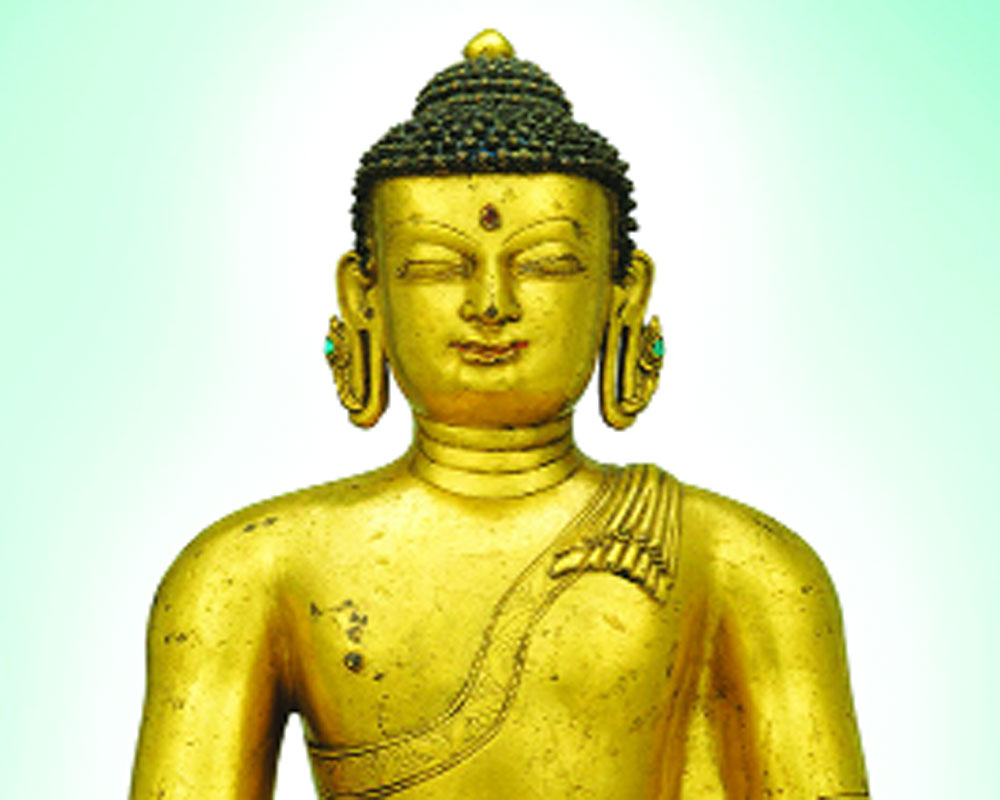After Lord Ram, KP Oli wants to appropriate the legacy of Buddha in his continuing political tirade against India
That China has made inroads in our neighbourhood by debt-trapping our allies and is now muscling in politically to re-configure their equations with us isn’t surprising. So far, Nepal, Bangladesh and Sri Lanka have worked out a “trade with China” and “historical ties with India” strategy to play the two Asian majors against each other and extract concessional gains in the process. But looks like Nepal wants to obliterate the civilisational ties and shared heritage it has had with India, overturn history and claim its independent standing, which is almost impossible given the origins of the sub-continent. In fact, Nepal Prime Minister KP Sharma Oli is now appropriating shared cultural icons of Nepalese origin and claiming an intellectual property right over their legacy. First, he tried to own Lord Ram, saying he was born not at Ayodhya but in Nepal. Nobody took him seriously in the absence of any historical evidence. Now he is trying to reclaim Buddha as distinctly Nepalese. The controversy followed External Affairs Minister S Jaishankar’s speech at CII where he referred to Mahatma Gandhi and Lord Buddha as two great Indians. Various Nepalese leaders, including Opposition leaders and former Prime Minister Madhav Kumar Nepal, reacted immediately, terming the reference “objectionable.” The official statement laid stress on historical and archaeological evidence, which prove that Buddha was born in Lumbini, Nepal. India though was quick to put the lid on the row, saying that no one could doubt that Buddha was born in Lumbini but the emphasis was on the Buddhist heritage shared by the two countries. India has never attempted a cultural takeover of Buddha at any time, religiously attributing his birth to Nepal. Similarly, Nepal cannot deny the fact that he spent most of his life in India, attaining enlightenment at Bodh Gaya, delivering key sermons at Sarnath and ultimately leaving the earthly world at Kushinagar. Besides, someone like Lord Ram and Buddha cannot be defined by their geography but by their philosophy that the whole world has adopted. In that sense, anybody, anywhere can quote them as inspiration. Though, Lord Buddha made India his karmabhoomi, travelling through its length and breadth and preaching the true dharma, his followers and practitioners keep him fervently alive in most countries in Southeast Asia compared to India. Does that mean we can claim to be the fountainhead of the bigness of his vision? By that logic, poet laureate Rabindranath Tagore is as much ours as he is of Bangladesh, whose national anthem he wrote and where he spent much time. Having been a Hindu kingdom and given its contiguity with India, Nepal has had the strongest bond with us in terms of shared history, culture and people-to-people contacts. This commonality has been one of the reasons for the open borders between both countries. So now that Oli is putting up cultural barriers, looks like he is determined to eliminate any interdependent associations with India and is decidedly hawkish about China, willing to be its vassal State. In fact, China has upped its cultural diplomacy, too, in Nepal, helping it rebuild old temple complexes and shrines that were damaged in the earthquake of 2015.
Oli’s latest tirade against India follows the ongoing cartographic war, where he questioned Indian claims around the Lipulekh Pass based on varied interpretations of British era maps. This despite the fact that the pass is an accepted Indian gateway, according to a 1954 treaty signed between India and China. Although the new road near it, built by New Delhi to facilitate pilgrim traffic to Kailash Mansarovar, is now one of the quickest links between Delhi and the Tibetan plateau, China had not objected to it. In fact, it recognised India’s sovereignty by agreeing to expand trade through the pass. But overriding such precedents, Nepal released a revised map showing Limpiyadhura, Lipulekh and Kalapani under its territory. No political party opposed the resolution for reclamation. Yet India has been in possession of this territory for at least 60 years. Even the new road to Lipulekh does not challenge that status quo. Nepal says that the basis for demarcation, the Kali river, originates from a stream at Limpiyadhura, north-west of Lipulekh. Thus Kalapani, Limpiyadhura and Lipulekh are actually on its eastern bank and qualify to be its land. New Delhi has countered this, saying that Kali originates in the springs well below the pass and that while the old map does not demarcate the area north of these springs, administrative and revenue records of the 19th century show that Kalapani was on the Indian side and should be a part of Uttarakhand. China, as in Doklam, has taken advantage of the trijunction area to complicate the territorial confusion and push India backward. But if Nepal has gone so maximalist and nationalist, despite sharing Hindu origins and, therefore, more naturally inclined to the Narendra Modi regime, it means that China has an iron grip on it. India’s over-dependence on historical, spiritual and geographical connect as a leitmotif of diplomacy is being tested severely. And though we are investing in bilateral relations on more favourable terms and pushing COVID-19 aid, we can’t beat the Chinese, who make up over 90 per cent of Nepal’s FDI and are moulding it as their frontier proxy warrior.


























